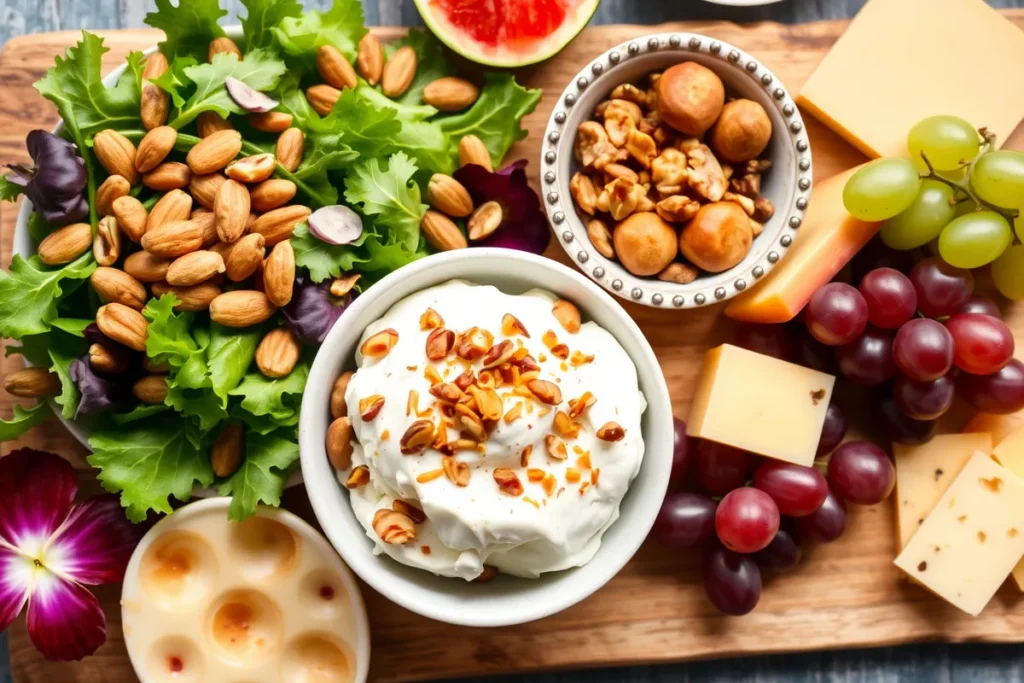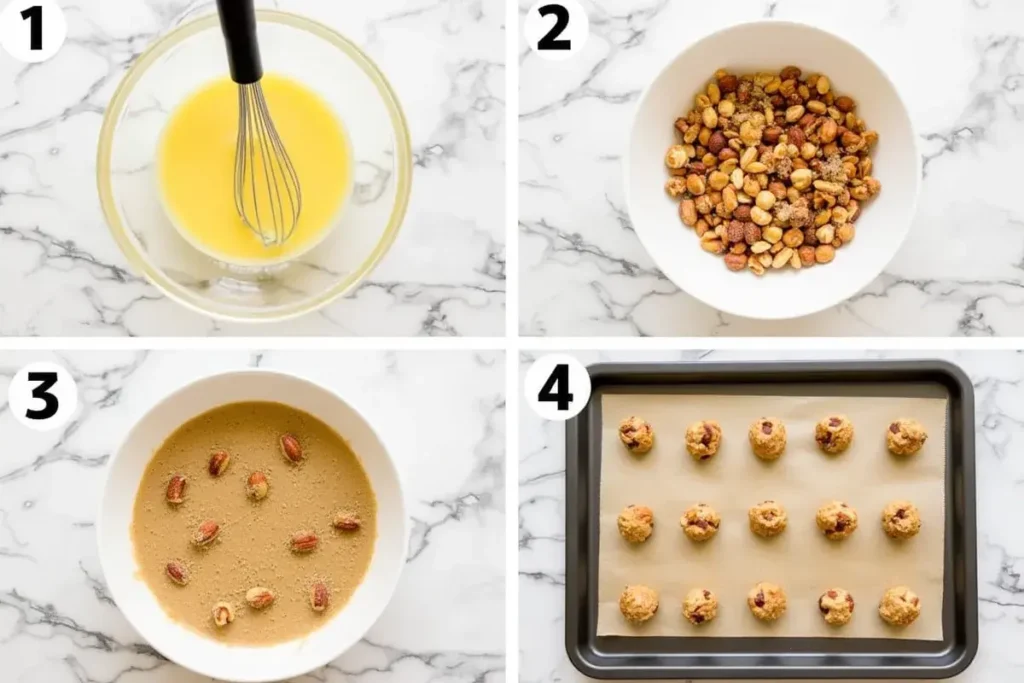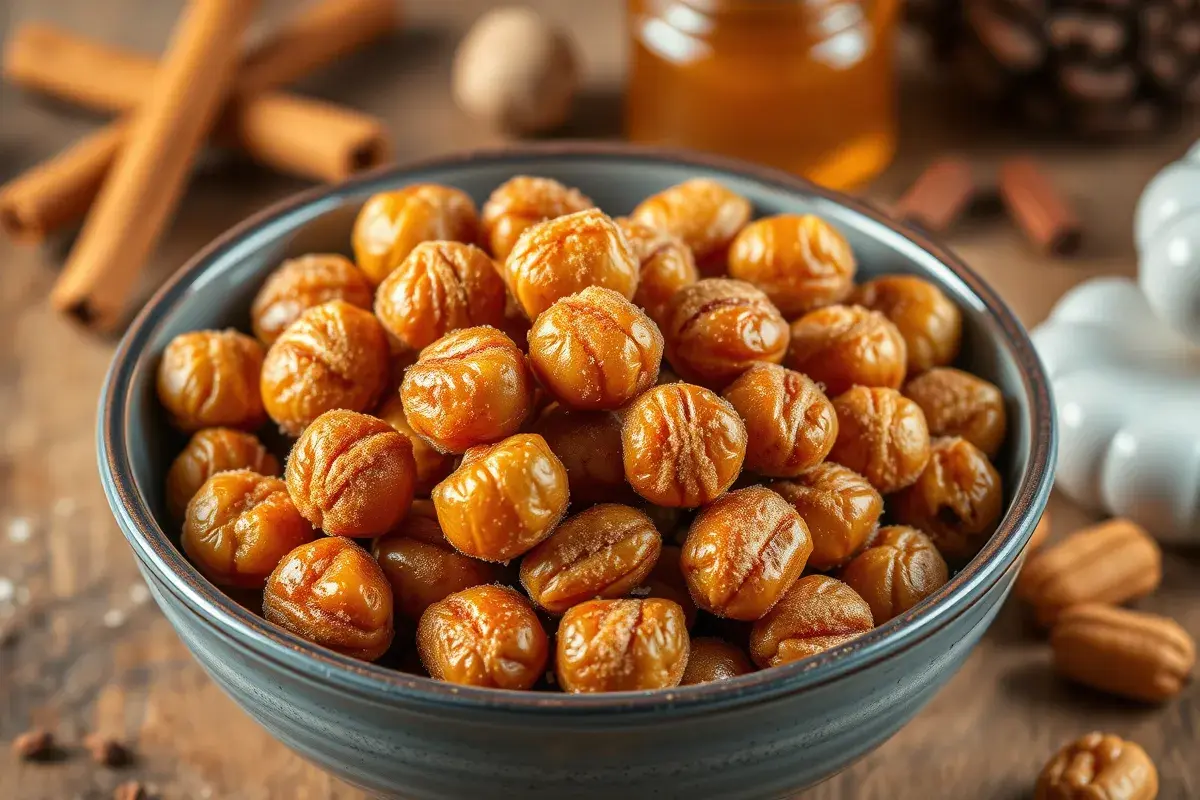Mashuga nuts have charmed snack enthusiasts for generations. People are drawn to their unique crunch and sweet-spicy flavor. If you’ve ever walked past a fair booth or specialty market offering sugar-coated nuts, you’ve likely caught the irresistible aroma of mashuga nuts. They delight your senses with every bite, delivering a taste that is both traditional and modern. In this comprehensive guide, you will learn what mashuga nuts really are, how they are made, the best ways to store them, and how to enjoy them in culinary masterpieces.
Moreover, this article is designed to highlight every aspect of mashuga nuts for both novices and experts. Whether you plan to craft them at home, serve them to guests, or simply savor them as an on-the-go treat, you will find valuable insights here. Therefore, read on, and discover why mashuga nuts keep winning hearts and pleasing palates worldwide.
What Exactly Are Mashuga Nuts?
Mashuga nuts are sweet, crunchy nuts often coated in a light candy or caramel shell. They are also known for their slight hint of spice or seasoning. Typically, almonds and pecans are the most common choices for mashuga nuts, though many enthusiasts experiment with other varieties like cashews or walnuts. Their defining feature is the combination of sweetness and a textured crust that clings to each nut.
Defining Characteristics of Mashuga Nuts
- Candy Coating: A glossy, sweet exterior that can include sugar, cinnamon, vanilla, or other flavorings.
- Signature Crunch: A crisp bite contrasts with the richer, softer interior of the nut.
- Broad Variety: While almonds and pecans dominate, other nuts such as cashews, walnuts, or hazelnuts can also become mashuga nuts.
- Aromatic Appeal: Spices like cinnamon or nutmeg may be added, sending delightful scents through any space.
Consequently, these qualities make mashuga nuts a sought-after snack. They combine everyday indulgence with gastronomic flair. If you’ve ever tasted candied nuts at a local festival or a high-end confectionery shop, chances are you’ve encountered mashuga nuts under a different name. However, what sets them apart is the whimsical approach to flavor, blending sweet, salty, and spiced notes together.
Origin of the Term “Mashuga”
The term “mashuga” sometimes refers to something eccentric or “crazy” in a playful sense. Therefore, the name captures the spirited nature of these nuts. They taste a bit wild because of their varied toppings and surprising seasonings. Yet, the final product is a balanced treat that appeals to diverse palates.
A Bite Into the History of Nuts
Before mashuga nuts became mainstream, candied and spiced nuts had a long and storied history. Ancient cultures prized nuts for their nutritional value and portability. They were traded along ancient routes and adopted in sweet and savory dishes alike.
- Ancient Roots: Nuts—especially almonds—were enjoyed in the Mediterranean and the Middle East for thousands of years. Recipes involving honey-roasted nuts were documented as early as 1000 BCE.
- Medieval Europe: Candied nuts became a delicacy in royal courts, symbolizing luxury and sophistication. Sugar was a prized ingredient, often reserved for celebrations or to impress guests.
- Global Expansion: With the rise of global trade, sugar became more accessible. Consequently, recipes for candied almonds, pecans, and walnuts spread to the Americas.
- Modern Twist: As confectioners began experimenting with varied spices, the concept of mashuga nuts evolved. Flavor combinations, such as cinnamon-sugar or chili-lime, became increasingly popular.
Cultural Influence on Candied Nuts
Moreover, each region adds its own twist. In Latin American markets, you’ll often encounter spicy-sweet coatings with chili. In Asia, sweet-savory blends with soy sauce or sesame might be preferred. Furthermore, in the U.S., cinnamon sugar remains a classic. This rich tapestry of global influences ultimately gave birth to mashuga nuts, which incorporate several flavor elements into one brilliant recipe.
Varieties and Flavor Profiles
Today, mashuga nuts come in many shapes, sizes, and flavors. Some are predominantly sweet, while others lean towards savory and spicy notes. In some renditions, you may detect a subtle hint of salt to balance the sugar. In others, the sweetness stands out more, recalling a classic candied nut.
Popular Nut Varieties Used in Mashuga Nuts
- Almonds: Lean, slightly sweet, and well-suited for caramelized coatings.
- Pecans: Rich, buttery, and ideal for sugary or maple-infused shells.
- Cashews: Naturally creamy, offering a silky contrast to crunchy coatings.
- Walnuts: Earthy, with a robust flavor that holds up well to bold spices.
Flavor Combinations to Try
- Cinnamon Brown Sugar: The ultimate classic that highlights warm undertones.
- Maple Glaze: Offers a deep caramel flavor with a touch of smoky sweetness.
- Chocolate Drizzle: Perfect for those who enjoy a dessert-like treat.
- Spicy Kick: Chili powder, cayenne, or paprika add a fiery twist.
- Savory Herb: Rosemary or thyme pairs well with a touch of salt and pepper.
Therefore, whether you enjoy something mild or a bolder spice blend, there’s a mashuga nut flavor profile waiting for you. Experimenting with new spices or combining different sweeteners—like honey, brown sugar, or maple syrup—can transform ordinary nuts into something unique. You can also adjust the level of sweetness or salt to match your preference.
The Art of Making Mashuga Nuts
Crafting mashuga nuts at home can be surprisingly simple. You don’t need expensive equipment or complex techniques. In fact, you can roast a batch using your everyday oven. However, achieving that perfect glossy finish and balanced flavor requires attention to detail. That is why it’s crucial to measure ingredients accurately and monitor temperatures throughout the cooking process.
Essential Tools and Ingredients
- Baking Sheet: A non-stick or parchment-lined sheet is vital for even heating.
- Mixing Bowl: You’ll need enough space to coat the nuts thoroughly.
- Sweetener: White sugar, brown sugar, or maple syrup are common choices.
- Binding Agent: Egg whites or a bit of butter to hold the seasonings.
- Spices: Cinnamon, nutmeg, or even cayenne pepper for extra zest.
Step-by-Step Process
- Prepare the Nuts: Choose fresh, unroasted nuts. Remove any debris or shells.
- Make the Coating: Whisk egg whites and a pinch of salt until slightly frothy. Then, add sugar and spices.
- Combine and Coat: Toss your nuts in the mixture, ensuring an even, glossy coat.
- Bake: Spread nuts evenly on a baking sheet. Roast at 300°F (150°C) for about 20–30 minutes. Stir halfway through for even caramelization.
- Cool Down: Allow the nuts to cool on the sheet. As they cool, the sugar coating will harden, creating that signature crunch.
In addition, be mindful of temperature. If your oven runs too hot, the sugar may burn. If it’s too cold, you might not get the right crunch. After baking, taste a few nuts to make sure they’ve achieved the desired texture. Because mashuga nuts can continue to cook slightly after you remove them from the oven, you should be prepared to let them rest at room temperature for up to 20 minutes.
Storage, Freshness, and Preservation
Once you’ve mastered making mashuga nuts, you’ll want to store them properly. Proper storage helps maintain flavor and crunch. With correct preservation methods, your mashuga nuts can remain fresh for weeks or even months.
- Airtight Containers: Glass jars or plastic containers with tight-fitting lids are the best choice.
- Cool, Dry Place: Keep them in a cupboard away from direct sunlight or heat. Moisture and heat can compromise the texture.
- Separation: If you’ve made multiple flavors, store them separately. Strong flavors, like chili or rosemary, can mingle.
Extending Shelf Life
- Freezing: Place nuts in a freezer-safe container or heavy-duty freezer bag. They can last up to six months.
- Vacuum Sealing: This method removes excess air, preventing oxidation.
- Avoid Refrigeration: Fridges can introduce moisture, which might soften the candy shell.
Furthermore, always label and date your containers if you regularly make different batches. This way, you can easily track freshness. When you’re ready to serve, set them out in a bowl and allow them to come to room temperature. They will still maintain their satisfying crunch.
Creative Ways to Serve Mashuga Nuts

Although mashuga nuts shine as a standalone snack, their uses extend far beyond munching by the handful. They can elevate salads, breakfasts, and even desserts. Therefore, consider these creative serving ideas that highlight their sweet-and-savory charm.
1. Salads and Bowls
- Toss a handful of mashuga nuts on mixed greens with goat cheese, pears, or cranberries.
- Use them as a topping for grain bowls or Buddha bowls to add a crunchy note.
2. Desserts
- Sprinkle them on top of ice cream or gelato.
- Incorporate crushed mashuga nuts into brownies or cookies for extra texture.
- Add them to a cheesecake crust for a twist on the traditional graham cracker base.
3. Breakfast Favorites
- Stir them into oatmeal or Greek yogurt.
- Serve them on French toast with a drizzle of syrup.
- Use them to garnish smoothie bowls.

Unique Pairings
- Cheese Boards: Sweet, spiced nuts pair beautifully with sharp cheeses, grapes, and crackers.
- Savory Dishes: Chop and sprinkle them over roasted vegetables or grilled meats.
- Cocktail Garnish: Grind mashuga nuts into a coarse powder. Use this to rim cocktail glasses, especially for rum-based or sweet beverages.
Hence, mashuga nuts offer a versatile ingredient that enhances both sweet and savory meals. They can transform ordinary dishes into memorable culinary experiences. Try them in experimental recipes, or keep them on hand for quick snack fixes. In no time, you’ll find endless ways to incorporate these irresistible nuts into your daily diet.
Nutritional Facts and Health Benefits
While mashuga nuts may be sweet treats, they still contain the nutritional benefits of nuts. Nuts are generally rich in protein, healthy fats, vitamins, and minerals. The sugar and possible spices add flavor, but they don’t erase the innate goodness locked inside each crunchy bite.
Key Nutrients in Nuts
- Healthy Fats: Almonds, pecans, and walnuts are high in monounsaturated and polyunsaturated fats.
- Protein: Nuts are a valuable plant-based protein source.
- Fiber: Most nuts provide dietary fiber, aiding digestion.
- Vitamins & Minerals: Nuts can contain vitamin E, magnesium, and calcium.
Balancing Indulgence and Health
However, moderation is essential. Because the candy coating adds sugar, the calorie content can increase quickly. Aim for small servings or incorporate mashuga nuts into balanced meals. Pair them with fresh fruit or lean protein to offset the sweetness. Also, consider low-sugar variations by using alternative sweeteners such as stevia, monk fruit, or a light drizzle of honey.
Nevertheless, when enjoyed responsibly, mashuga nuts can be part of a well-rounded diet. They offer nutrients, energy, and a burst of flavor. You don’t have to avoid them if you pay attention to portion sizes. After all, life is about balance, and there’s room for a sweet treat in most dietary plans.
Common Mistakes to Avoid
Even seasoned cooks encounter issues when making or storing mashuga nuts. Fortunately, these mistakes are easy to fix or prevent. By paying attention to certain details, you can ensure each batch meets your expectations.
1. Overbaking or Underbaking
- Result: The sugar coating burns or remains sticky.
- Solution: Use a thermometer to check your oven’s accuracy and follow precise baking times.
2. Inconsistent Coating
- Result: Some nuts lack flavor, while others have clumps of sugar.
- Solution: Thoroughly toss the nuts in your seasoning mixture to achieve even coverage.
3. Skipping the Stir
- Result: The nuts may stick to the baking sheet or burn on one side.
- Solution: Stir or flip the nuts halfway through baking. This step promotes even caramelization.
4. Storing Them Incorrectly
- Result: Nuts lose their crisp texture or become stale quickly.
- Solution: Always use airtight containers and keep them in a cool, dry place.
Troubleshooting Tips
- Taste Test: Sample a nut halfway through baking. Adjust the seasoning if necessary.
- Watch the Edges: The edges of your baking sheet can heat more quickly, so rotate the tray as needed.
- Start Small: If you’re unsure about a spice blend, make a small test batch first.
Therefore, you can avoid these pitfalls by paying close attention to your process and environment. Mashuga nuts rely on precise temperature, balanced flavors, and proper storage. By honing these skills, you’ll consistently produce top-notch batches that everybody will want to taste.
FAQs About Mashuga Nuts
Below are the most common questions people have about mashuga nuts. Discover detailed insights on this delicious snack. Learn how to maximize flavor, preserve freshness, and craft your own memorable variations.
What is a mashuga nut?
A mashuga nut is essentially a sweet, crunchy, and lightly spiced nut. Almonds and pecans are most commonly used, although other nuts can also be turned into mashuga nuts. They are typically coated in sugar, cinnamon, or other spices, then roasted until crisp. The result is a taste that blends sweetness, spice, and the nuttiness of almonds, pecans, or cashews.
What are candied nuts called?
Candied nuts come in many forms and names. Sometimes, they’re simply known as caramelized nuts or spiced nuts. In various regions, you’ll hear them referred to as mashuga nuts, sugar-and-spice nuts, or even frosted nuts. The method involves coating raw or lightly roasted nuts with sugar, egg whites, and seasonings, then baking them. Despite the name variations, they all share a sweet, crunchy coating.
How to make spices stick to nuts?
To ensure spices stick to nuts, use a binding agent like egg whites or a small amount of melted butter. Gently whisk the agent with sugar, salt, and your choice of spices. Then, toss the nuts in the mixture until well-coated. The egg whites or butter help the sugar and spices adhere. Afterward, bake the coated nuts at a moderate temperature. When they cool, the spices form a crunchy shell.
Mashuga nuts celebrate the indulgent side of snacking. They are sweet yet satisfyingly crunchy, offering a world of flavor possibilities. Because they’re easy to make, you can effortlessly incorporate them into meals, desserts, or simple snack breaks. Furthermore, with the right storage techniques, mashuga nuts can stay fresh for weeks—making them a convenient treat to enjoy at your leisure.
With this comprehensive guide, you now have the knowledge to create your own gourmet-quality mashuga nuts at home. You also know how to select and store them, ensuring each batch remains vibrant in taste and texture. Therefore, let your creativity run wild. Mix and match spices, sweeteners, and nuts until you discover your perfect blend. Above all, don’t forget to savor every crunchy, sugary bite. After all, life is a little sweeter with mashuga nuts in it.

